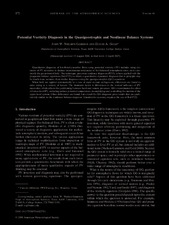| dc.creator | Nielsen-Gammon, John | |
| dc.creator | Gold, David | |
| dc.date.accessioned | 2016-10-28T19:45:54Z | |
| dc.date.available | 2016-10-28T19:45:54Z | |
| dc.date.issued | 2016-10-28 | |
| dc.identifier.uri | https://hdl.handle.net/1969.1/158230 | |
| dc.description | © Copyright 2008 American Meteorological Society (AMS). Permission to use figures, tables, and brief excerpts from this work in scientific and educational works is hereby granted provided that the source is acknowledged. Any use of material in this work that is determined to be “fair use” under Section 107 of the U.S. Copyright Act September 2010 Page 2 or that satisfies the conditions specified in Section 108 of the U.S. Copyright Act (17 USC §108, as revised by P.L. 94-553) does not require the AMS’s permission. Republication, systematic reproduction, posting in electronic form, such as on a web site or in a searchable database, or other uses of this material, except as exempted by the above statement, requires written permission or a license from the AMS. Additional details are provided in the AMS Copyright Policy, available on the AMS Web site located at (https://www.ametsoc.org/) or from the AMS at 617-227-2425 or copyrights@ametsoc.org. | en |
| dc.description.abstract | Quantitative diagnosis of low-Rossby-number flows using potential vorticity (PV) includes using elements of PV advection to deduce instantaneous tendencies of the balanced atmospheric state, most commonly the geopotential field. This technique, piecewise tendency diagnosis (PTD), is here applied with the prognostic balance equations (Bal-PTD) to obtain a quantitative dynamical diagnosis that in principle may be much more accurate than similar diagnoses using the quasigeostrophic (QG) equations.
When both are applied systematically to a case of rapid oceanic cyclogenesis, differences are found to arise owing to a variety of factors. The dominant factor is differences in the vertical influence of PV anomalies, which affects the partitioning between local and remote processes. QG overestimates the effect of lower-level PV, including surface potential temperature, in amplifying and controlling the motion of the upper-level system. Other differences are found, but overall the QG diagnosis gives results that are qualitatively similar to the nonlinear balance diagnosis. Quantitative accuracy requires the use of Bal-PTD. | en |
| dc.description.sponsorship | National Science Foundation | en |
| dc.language.iso | en_US | |
| dc.title | Potential Vorticity Diagnosis in the Quasigeostrophic and Nonlinear Balance Systems | en |
| dc.type | Article | en |
| local.department | Atmospheric Sciences | en |
| dc.identifier.doi | 10.1175/2007JAS2270.1 | |


